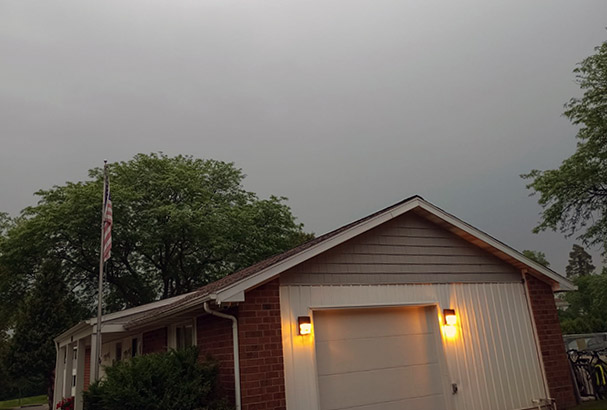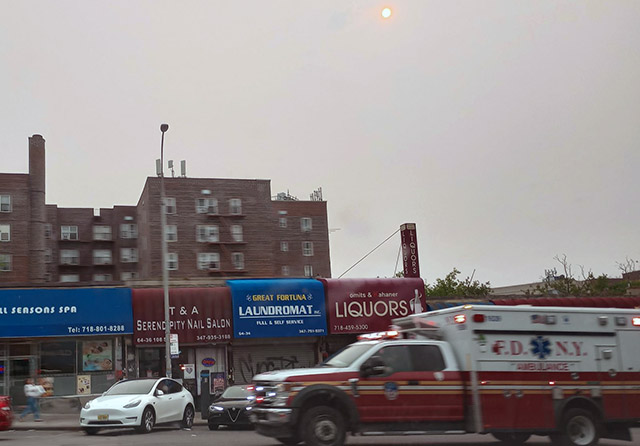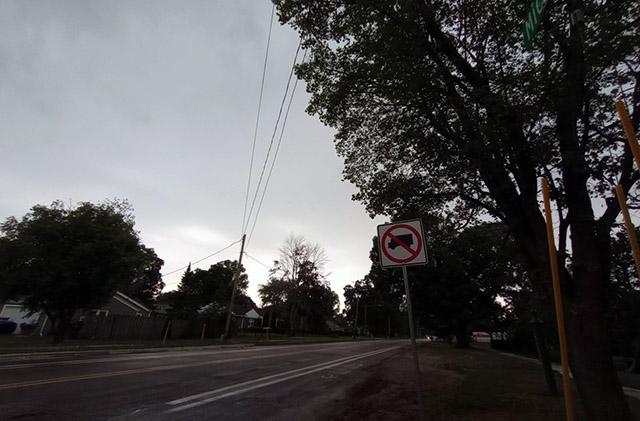
Planetary health needs stat response, ER physician says
Trained in emergency medicine, a stint at the CDC sparked a doctor's lifelong interest in climate change.Dr. Jeremy Hess works as a UW Medicine Emergency Department physician, UW medical school professor and director of the UW's Center for Health and the Global Environment.
"It was just serendipitous," he says of how he initially became interested in global warming,which he describes as "the big, broad problem in front of so many health issues:"
You were working in Harborview’s emergency department during the 2021 heat dome event here in Washington. Was that one of the most significant examples you’ve personally seen of the impact climate change can have on health?
Certainly most directly. I've known for a long time about the different ways that weather and climate can bring patients to the emergency department, but a fair amount of that is kind of at a population level, manifesting as statistical associations. It’s hard to pick out patterns like a few more patients with chronic obstructive pulmonary disease (COPD) flares, strokes, or cardiac dysrhythmias during a smoke event, for instance. But that event was different.
How was this heat dome event different?
It was, sadly for me honestly, clearly a climate event that was bringing a bunch of people into the emergency department. It was a very clear link, not just a statistical association noticed after the fact. Even worse, we would get calls from EMS [emergency medical services]. Then they didn't arrive, which meant the patient had passed before they got to the hospital. It happened a number of times.
It was hard for me because, prior to that I’d had contact with emergency physicians who had been impacted by extreme weather events — hurricanes in Texas, flooding in New York — but those weren’t my events. This one was.
Were most of the patients treated for problems related to the 100-degree plus temperature?
Directly and indirectly. We had patients who had pretty standard heat exhaustion and heat stroke; those were directly related to the heat. But we also had a lot of patients for whom heat had been a stressor that worsened any other problems they may have had, who had exacerbations of other diseases made worse by the heat as well as some new diseases that were related to the heat event.
For instance, I had a patient a couple days after the heat event with reasonably well-controlled diabetes. They had a new diagnosis of kidney failure as a result of dehydration. This patient got a very serious illness related to the underlying condition driven by the heat.
What led you as a physician to your interest in environmental health and global warming?
I think it was great mentorship, some luck and some opportunities.
I went to medical school intending to work at the intersection of public health and medicine in global health. At the time, the late 1990s, I thought my work would be in infectious disease. I had done a lot of work on HIV/AIDS at that point.
But as I went through medical school, I was exposed to emergency medicine, which I enjoyed. I also had experiences that exposed me to environmental health, which I didn’t know much about, and great mentorship from Howard Frumkin, a former dean at the School of Public Health here.
When did that happen?
Howie, prior to coming to the UW, was the director of the National Center for Environmental Health at the Centers for Disease Control and Prevention.
After I finished residency, he asked me to come work with him at the CDC to develop a program focused on climate preparedness. That was the first exposure I had to climate change, particularly as a significant health issue, and I found it very compelling.
It was just serendipitous. My training fit nicely with climate change. It’s such a big, broad problem in front of so many health issues.
Are medical schools beginning to include global warning’s health impacts in their curriculum? How would you rate the progress in this effort?
It’s starting. I of course wish it had started a long time ago. I understand there’s a huge

volume of information that’s part of the medical school curriculum. At some level it's a zero sum game. You put something in, you take something else out.
I respect people for thinking creatively about how to incorporate climate change into their curriculum. Some foundational principles include recognizing social determinants of health. This is an additional factor to consider and developing the skills on how climate change may play a role in any given situation.
Do you think healthcare is contributing to climate change?
The healthcare system and delivery actually causes quite a bit of harm through its choices of energy use and sustainability. That’s been a blind spot in medicine for a long time.
That needs to change. It's starting a little late. The response is lagging the awareness by a decade or more. But now we’re getting some good momentum. It probably will take some additional time for all that awareness in the next generation of physicians to fully impact health care operations and start reducing the really substantial greenhouse carbon footprint of healthcare delivery.
You’re trained in both emergency medicine and environmental public health. You work in the emergency rooms at Harborview and UW Medical Center-Montlake. You’re a professor and serve as director of the Center for Health and the Global Environment. How do you divide your time among these roles?
I'm 50% clinical. My primary appointment is in emergency medicine. The rest of my time in the School of Public Health, where I do my other work, is focused on teaching, research and administration. And I collaborate with colleagues in various public health agencies and other settings.
What course do you teach?
Climate Change and Public Health Practice. It focuses on how to prepare students who see themselves playing a significant role in the public health engagement with climate change in the future. What practical skills do they need to carry that out effectively?
You’re involved in research. What are you investigating?
What we call climate-sensitive hazards:
* Like heat or pollen, various infectious diseases, extreme weather events, flooding and all those things.
* Heat and its health impacts, preparedness for extreme heat events.
* Trying to better understand weather and climate influences on pollen and how that impacts people’s health and how climate change may affect that.
* Impacts of flooding on people’s health and health-care utilization.
* How mitigating efforts to reduce greenhouse emissions will yield some related health benefits.
You also are director of the Center for Health and the Global Environment. Could you describe the work that’s ongoing there?
It’s based in the School of Public Health and also a member of EarthLab, a university-wide

initiative that focuses on climate change and social justice. We find that helpful, because while we’re focused on health, we’re keen to connect with all the other efforts here at the university around climate change and its impacts. Together, the UW has a lot of strong climate assets and we can serve as a phenomenal resource.
At CHanGE, our center, we have primary responsibility for teaching and training in climate change around public health and also part of a big effort to incorporate planetary health into the School of Public Health curriculum.
What’s the biggest challenge you see in public perception of climate change?
We’re a little behind the 8 ball with climate change. We haven’t engaged it as proactively as we should have. Now we’re behind the curve in terms of reducing the threat.
The impacts are emerging sooner than expected. And it’s going to accelerate. I don’t think people understand that. We’re behind the curve. Now we risk getting ever further behind the increase because the rate of impacts will increase progressively.
The problems associated with global warming can feel overwhelming at times. Are there initiatives locally, nationally or internationally that you feel are examples of grassroots efforts that can be done by individuals, groups or communities?
There are lots of examples of effective action. What we’re doing in Washington state around our transition to green energy is great.
I feel like we’re doing the right things in terms of trying to maximize the benefits for health equity and that frankly it’s a good business choice. We’re getting into a market space relatively early on that. It will be very profitable for Washington business in the long run. There’s a strong business case, strong health case and strong health equity case.
That said, I also have no illusions that some of that process will be disruptive. It requires large-scale, informative change that is rapid. Any large-scale, rapid change is disruptive. You have to, as much as you can, avoid unintended consequences in that transition.
But altogether, the changes we’re making to rapidly reduce our emissions are great examples of local efforts to make positive change.
What are some of the groups that have been involved?
Clean and Prosperous Washington, an alliance of progressive business leaders, supports business and government in making that transition by providing a lot of education to businesses about opportunities and how to make the transition and what it takes from a business standpoint.
I also work with an organization Front and Center that is leaning heavily into the health equity conversation and pushing legislators to keep health equity front of mind.
How do you personally feel about what stage we’re at with climate change?
I have many mixed emotions. There are lots of examples that are heartening. But, that doesn't eclipse the loss I see related to these things. It’s the extinction we're seeing, loss of biodiversity. Those are really painful losses.
I’m afraid they will continue and worsen in many cases. That’s hard to deal with.
I’m excited about a lot of things that are happening, but also can’t deny the losses we’re seeing that probably will grow.
Written by Sharon Salyer. Photography by Alice C. Gray.
Media contact: mediarelations@uw.edu
For details about UW Medicine, please visit http://uwmedicine.org/about.
